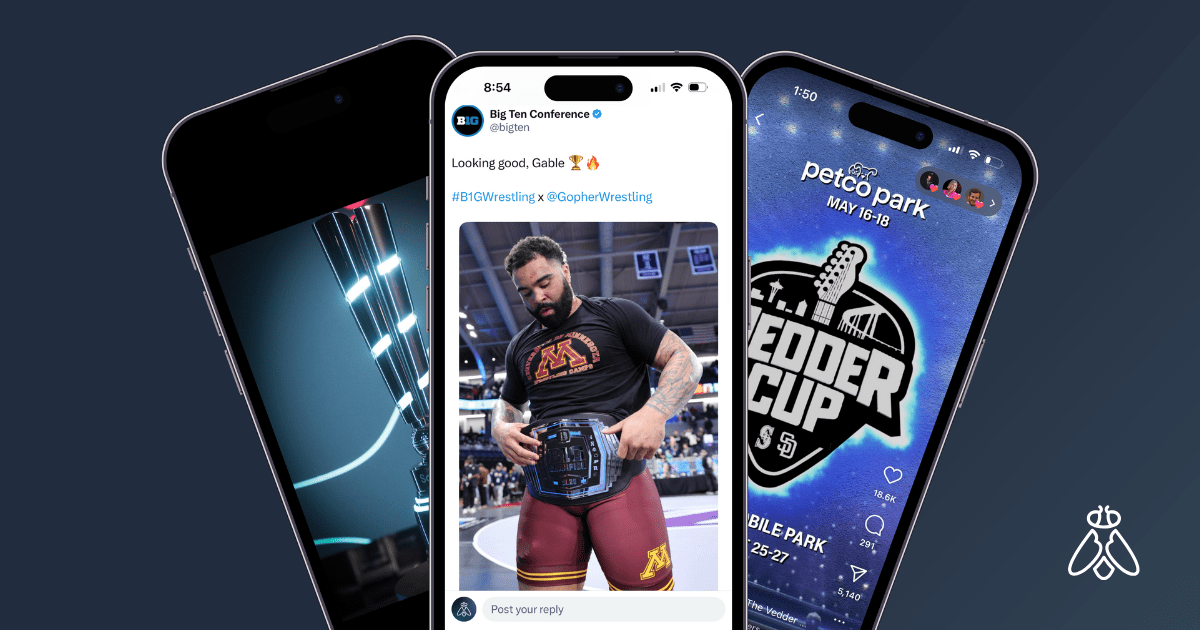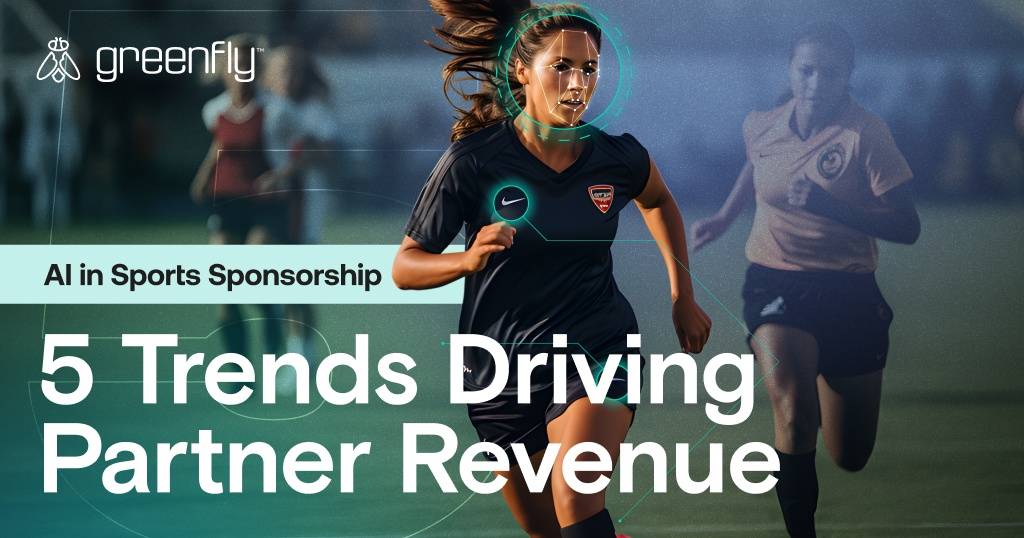Ask any player, coach, general manager, front office employee or fan of a sports franchise what the ultimate goal of their season is and you’ll undoubtedly get myriad variations of the same answer: to win a championship.
For most of these stakeholders, winning that championship represents the single most engaging moment of their season…oftentimes in the history of their franchise or institution.
You don’t want your competitors to emerge victorious from a day’s, season’s, career’s worth of hard work only to pull a Ricky Bobby in the biggest moment in franchise history, wondering what to do with their hands in a postgame presser. No, you want your athletes…the faces of your franchise…hoisting hardware, drinking from awards like they’re giant chalices, swimming in fountains and throwing the trophy to Rob Gronkowski on the adjacent boat in your maritime championship parade.
It simply cannot be stressed enough how important those moments are for all parties involved. And the brands associated with those institutions recognize that the way to maximize the value of those moments is to take a content-forward approach. Envision what you want that moment to look like digitally or financially and work backward to manufacture the results you’re looking for.
We’ve rounded up a few of the latest examples of organizations that aimed to maximize the value of their short-form content by establishing a unique take on physical hardware awarded to the winners of a series or season.
Big Ten Conference Unveils Wrestling Championship Belts
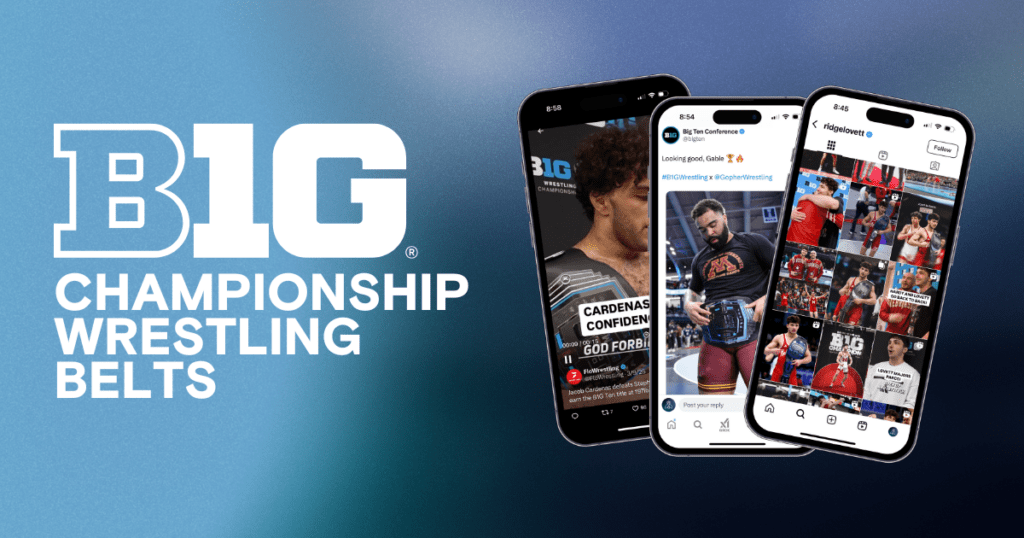
Ahead of the 2025 Big Ten Conference Wrestling championships, Big Ten Commissioner Tony Petitti had an idea to create a surprisingly familiar piece of hardware to bestow upon each of the individual champions crowned at the event.
Petitti and the conference commissioned Big Ten Wrestling Championship Belts, much like you’d typically see associated with professional wrestling, boxing or MMA events.
That “aesthetic aha!” was baked into the biggest moments of the conference’s wrestling season, organically making the resulting content more engaging.
Part of the genius of the idea, quite frankly, is that it also made the (more engaging) content easier to capture and produce. The awards were belts, which innately informed the winners what they should do after they won their respective tournaments. Champs knew to lift the belts above their heads, wrap them around their waists and drape them over their shoulders, allowing the new hardware to permeate hundreds of pieces of short-form content, many of which hit social media feeds almost instantly.
The conference, the schools, the wrestling programs, the individual competitors, and external partners and publications all captured the content because the belts were portable and wearable. No matter the location of the camera or the angle being shot, the winners were toting their hardware around with them and actively interacting with them.
Quantitatively, the idea was a success as all parties involved had more content worth publishing. Qualitatively, everyone involved got more emotive content as the champions could reach out and touch their accomplishment in real-time immediately after being named the victor.
Anecdotally, the results were clear: Ridge Lovett was the Big Ten Conference Champion for the 149-pound weight class in 2024 and had three posts to his Instagram grid from the event, two of which featured Big Ten branding and none of which contained an individual award. He repeated as champion of that weight class in 2025, but this year he had eight posts to his grid during the same time frame, seven of which featured prominent Big Ten Branding and four of which had the belt in view as either the lead image in the Carousel or the thumbnail for the Reel.
On the Big Ten’s wrestling-dedicated accounts alone, videos with the belt(s) visible in the thumbnail generated upwards of 850 thousand views, and one nine-second slow motion clip of Minnesota’s Gable Steveson tapping the belt after his victory earned 292 thousand views on TikTok for the Big Ten Network.
Oh, and people are already trying to buy replicas. Wrestling’s in their blood in Big Ten Country.

TGL Goes Full Empire State Building with Color-Changing Trophy
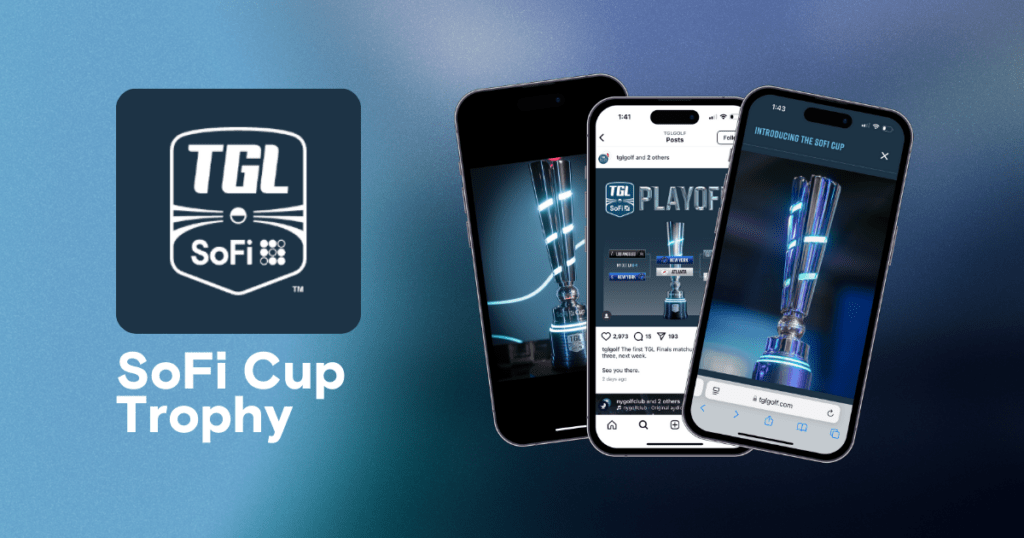
You could probably make the case that the past year in professional golf has been the most innovative in its long and storied history. Season three of Full Swing recently hit Netflix, showcasing some of the best personalities and storylines in the sport. The Happy Gilmore 2 trailer just dropped offering a chance for golf’s biggest stars to appear on the “silver screen” if only for a few seconds. And, most importantly, the inaugural season of TGL action has reinvented the sport with a content-forward approach, both to the linear and streaming broadcasts available on ESPN and ESPN+ and for fans following along by digesting and engaging with the short-form content the league and its stars have produced along the way.
The short-form content coming out of TGL matches has been nothing short of incredible throughout the inaugural season. We’ve had fans actively distracting golfers causing them to pull makeable putts, in-arena interviews with the litany of A-listers who have invested in the league and its teams, and viral mic’d up moments like when Tiger Woods told Tom Kim he’d won three Masters Tournaments before Kim was even born.
With that in mind, it’s no surprise that TGL was thinking about content when they developed the SoFi Cup, the trophy awarded to the league champions at season’s end. Emblazoned with the TGL presented by SoFi logo at its base, the trophy has a band of actual neon coiling up the vertical totem, giving it full “Empire State Building” functionality, in that it will light up with the colors of the winning club.
A trophy like this is so on-brand for TGL in that it’s carefully commissioned and technologically advanced, with natural showmanship baked into the product. They’ll be able to dim the arena lights at the SoFi Center in Palm Beach Gardens, FL, and have a dramatic moment wherein the colors of the trophy change to represent the inaugural champions.
Such an innovative moment for such an innovative product, and a clear opportunity to produce an impactful piece of short-form content to celebrate the culmination of that first season.
Padres and Mariners Announce “Vedder Cup” for a Cause
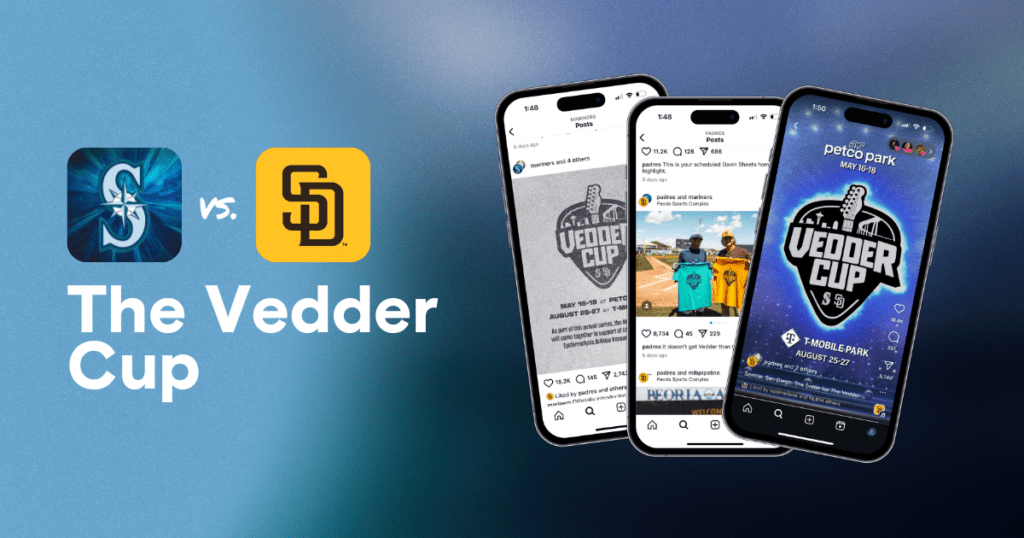
When MLB instituted permanent Interleague Play back in 1997, teams from the National and American Leagues were paired with cross-conference “rivals” that they’d face off against year in and year out.
Some of these rivalries were natural blood feuds that dated back a full century. Others — like the San Diego Padres and Seattle Mariners — were more marriages of convenience. The two were in opposite leagues, they’re both on the West Coast which helped with travel and scheduling, and they’ve long shared a Spring Training facility in Arizona. But the underlying hatred between the two franchises — and the organic engagement that follows — didn’t exist.
Enter: The Vedder Cup
Pearl Jam frontman and Rock and Roll Hall of Famer Eddie Vedder is obviously a music icon, but he’s also widely recognized in the baseball community as a diehard.
San Diegoans claim Vedder as their own because he was born and raised in America’s Finest City. Seattle has their own claim given Vedder and Pearl Jam helped take grunge mainstream as a part of the musical movement that originated in the Pacific Northwest.
Now, their claim to Vedder will be settled annually with “The Vedder Cup.” The winner of the season series will take home a yet-unveiled trophy designed by Vedder himself. (In the result of a split, the total run differential in the series will be used as the first tiebreaker followed by maximum exit velocity on a hit.)
For the final game of the series, the Padres will offer a special ticket event to Petco Park. Both teams will have initiatives throughout the series benefitting the Epidermolysis Bullosa (EB) Research Partnership, a charity co-founded by Eddie and Jill Vedder dedicated to funding research to discover treatments and cures for EB.
“We are thrilled that we were able to bring the Vedder Cup concept to life in such a fun and impactful way,” said Mariners executive Trevor Gooby in a press release. “Creating and sharing memorable events like this with Mariners fans is extremely gratifying, and I am very thankful for Eddie, his team, EB Research Partnership, and the Padres in sharing the Mariners’ vision and commitment to celebrating and serving the Seattle community.”
Both clubs are working on collaborative merchandise to celebrate the rivalry, and they’re already producing tons of engaging short-form content to promote and celebrate the event, including a collaborative post published to Instagram pages owned by both teams, Major League Baseball, Pearl Jam and Vedder himself.
They haven’t even unveiled the Vedder-designed trophy yet and the parties involved have already generated more than half a million views on short-form videos and tens of thousands of engagements across a litany of social platforms.
That’s how you bake a championship-caliber content strategy into a special piece of metal.
